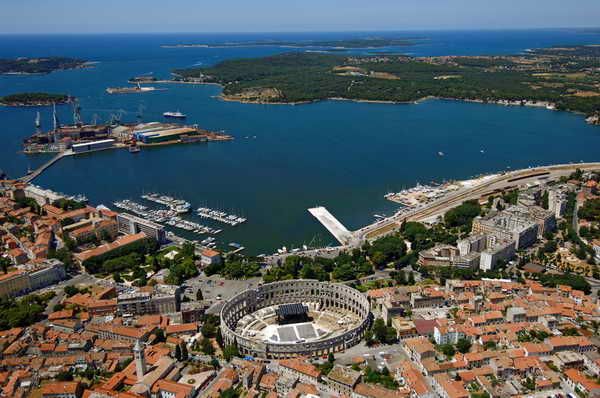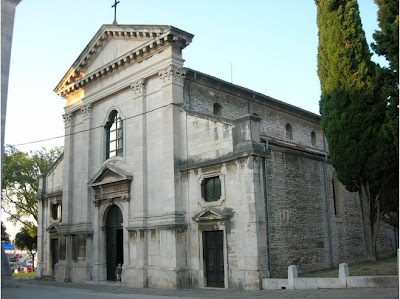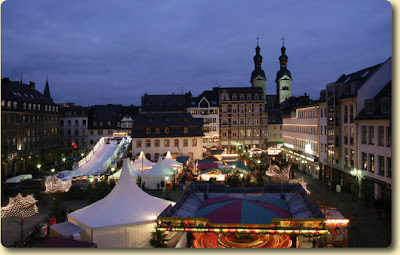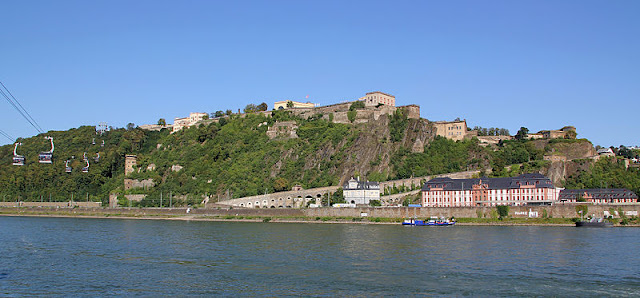Rijeka
Rijeka is the principal seaport and the third largest city in Croatia. It is located on Kvarner Bay, an inlet of the Adriatic Sea.
Though traces of Neolithic settlements can be found in the region, the earliest modern settlements on the site were Celtic Tarsatica (modern Trsat, now part of Rijeka) on the hill, and the tribe of mariners, the Liburni, in the natural harbour below. The city long retained its double character.
In the time of Augustus, the Romans rebuilt Tarsatica as a municipium (MacMullen 2000) on the right bank of the small river Rječina (whose name means "the big river") as Flumen. Pliny mentioned Tarsatica (Natural History iii.140).
In the time of Augustus, the Romans rebuilt Tarsatica as a municipium (MacMullen 2000) on the right bank of the small river Rječina (whose name means "the big river") as Flumen. Pliny mentioned Tarsatica (Natural History iii.140).
From the 5th century onwards, the town was ruled successively by the Ostrogoths, the Byzantines, the Lombards, the Avars, the Franks, the Croats, the Hungarians and the Venetians before coming under the control of the Archduchy of Austria ruled by Austrian Habsburgs in 1466, where it remained for over 450 years except French rule between 1805 and 1813, until its occupation by Italian and Croat irregulars at the end of World War.
After the 4th century the city was rededicated to St. Vitus, the city's patron saint, as Terra Fluminis sancti Sancti Viti or in GermanSankt Veit am Pflaum. In medieval times Rijeka got its Croatian name, Rika svetoga Vida (" the river of St. Vitus").
Medieval Rijeka was a city surrounded by a wall and was thus a feudal stronghold. The fort was in the center of the city, at its highest point.
After the 4th century the city was rededicated to St. Vitus, the city's patron saint, as Terra Fluminis sancti Sancti Viti or in GermanSankt Veit am Pflaum. In medieval times Rijeka got its Croatian name, Rika svetoga Vida (" the river of St. Vitus").
Medieval Rijeka was a city surrounded by a wall and was thus a feudal stronghold. The fort was in the center of the city, at its highest point.
After coming under Austrian Rule in 1466, Sankt Veit am Pflaum grew as part of the Holy Roman Empire and was eventually turned into a free port in 1723. During the 18th and 19th centuries was passed among the Habsburgs' Austrian, Croatian, and Hungarian possessions until being attached to Hungary for the third and last time in 1870. The City of Rijeka was governed as a corpus separatum directly from Budapest by an appointed governor, as Hungary's only international port. There was competition between Austria's Port of Trieste and Hungary's Port of Fiume. In the early 19th century, the prominent economical and cultural leader of the city was Andrija Ljudevit Adamić.
Fiume also had a significant naval base, and in the mid-19th century it became the site of the Austro-Hungarian Naval Academy (K.u.K. Marine-Akademie), where the Austro-Hungarian Navy trained its officers.
Fiume also had a significant naval base, and in the mid-19th century it became the site of the Austro-Hungarian Naval Academy (K.u.K. Marine-Akademie), where the Austro-Hungarian Navy trained its officers.
Giovanni de Ciotta (mayor from 1872 to 1896) proved to be the most authoritative local political leader. Under his leadership, an impressive phase of expansion of the city started, marked by major port development, fueled by the general expansion of international trade and the city's connection (1873) to the Hungarian and Austrian railway networks. Modern industrial and commercial enterprises such as the Royal Hungarian Sea Navigation Company "Adria", and the Papermill, situated in the Rječina canyon, producing worldwide known cigarette paper, became trademarks of the city.
The second half of the 19th century and the beginning of the 20th century (up to WWI) was a period of rapid economic growth and technological dynamism for Rijeka. The industrial development of the city included the first industrial scale oil refinery in Europe in 1882 and the first torpedo factory in the world in 1866, after Robert Whitehead, manager of the "Stabilimento Tecnico Fiumano" (an Austrian engineering company engaged in providing engines for the Austro-Hungarian Navy), designed and successfully tested the world's first torpedo.
Rijeka also became a pioneering center for high-speed photography. The Austrian physicist dr. Peter Salcher working in Rijeka's Austro-Hungarian Marine Academy took the first photograph of a bullet flying at supersonic speed in 1886, devising a technique that was later used by Ernst Mach in his studies of supersonic motion.
Rijeka's port underwent a tremendous development fueled by heavy Hungarian investment, becoming the main maritime outlet for Hungary and the eastern part of the Austro-Hungarian Empire and the fifth port in the Mediterranean, after Marseilles, Genova, Naples and Trieste. The population grew rapidly from only 21,000 in 1880 to 50,000 in 1910. A lot of major civic buildings went up at that time, including the Governor's Palace designed by the Hungarian architect Alajos Hauszmann.
The second half of the 19th century and the beginning of the 20th century (up to WWI) was a period of rapid economic growth and technological dynamism for Rijeka. The industrial development of the city included the first industrial scale oil refinery in Europe in 1882 and the first torpedo factory in the world in 1866, after Robert Whitehead, manager of the "Stabilimento Tecnico Fiumano" (an Austrian engineering company engaged in providing engines for the Austro-Hungarian Navy), designed and successfully tested the world's first torpedo.
Rijeka also became a pioneering center for high-speed photography. The Austrian physicist dr. Peter Salcher working in Rijeka's Austro-Hungarian Marine Academy took the first photograph of a bullet flying at supersonic speed in 1886, devising a technique that was later used by Ernst Mach in his studies of supersonic motion.
Rijeka's port underwent a tremendous development fueled by heavy Hungarian investment, becoming the main maritime outlet for Hungary and the eastern part of the Austro-Hungarian Empire and the fifth port in the Mediterranean, after Marseilles, Genova, Naples and Trieste. The population grew rapidly from only 21,000 in 1880 to 50,000 in 1910. A lot of major civic buildings went up at that time, including the Governor's Palace designed by the Hungarian architect Alajos Hauszmann.
Apart from the rapid economic growth, the period encompassing the second half of the 19th century and up to World War I also saw a shift in the ethnic composition of the city. Kingdom of Hungary, which administered the city in that period, favored the Italian element in the city and encouraged the Italian immigration at the detriment of Croats, with whom Hungarians at the time had a difficult relationship and who claimed the city should be part of Croatia-Slavonia (while Hungarians considered the city to be a corpus separatum). Around the start of the 20th century, Hungarians had 10 secondary schools and 4 elementary schools in the city, Italians had 5 secondary and 21 elementary schools, while Croats had no schools at all. In 1910, there were 24,000 Italians, but only 13,000 Croats in Rijeka (in addition to the 6,500 Hungarians and several thousands of other nationalities, mostly Slovenians and Germans), giving the city a decidedly Italian character.
The future mayor of New York City, Fiorello La Guardia, lived in the city around the start of the 20th century, working at the U. S. consulate (1901-1906), and reportedly even played football for the local sports club.
The future mayor of New York City, Fiorello La Guardia, lived in the city around the start of the 20th century, working at the U. S. consulate (1901-1906), and reportedly even played football for the local sports club.
Habsburg-ruled Austria-Hungary's disintegration in the closing weeks of World War I in the fall of 1918 led to the establishment of rival Croatian-Serbian and Italian administrations in the city; both Italy and the founders of the new Kingdom of the Serbs, Croats and Slovenes(later the Kingdom of Yugoslavia) claimed sovereignty based on their "irredentist" ("unredeemed") ethnic populations.
After a brief Serbian occupation, an international force of Italian, French, British and American troops occupied the city (November 1918) while its future was discussed at the Paris Peace Conference during the course of 1919.
Italy based its claim on the fact that Italians were the largest single nationality within the city, 88% of total. Croats made up most of the remainder and were also a majority in the surrounding area, including the neighbouring town of Sušak. Andrea Ossoinack, who had been the last delegate from Fiume to the Hungarian Parliament, was admitted to the conference as a representative of Fiume, and essentially supported the Italian claims.
On 10 September 1919, the Treaty of Saint-Germain was signed declaring the Austro-Hungarian monarchy dissolved. Negotiations over the future of the city were interrupted two days later when a force of Italian nationalist irregulars led by the poet Gabriele d'Annunzio seized control of the city by force; d'Annunzio eventually established a state, the Italian Regency of Carnaro.
The resumption of Italy's premiership by the liberal Giovanni Giolitti in June 1920 signaled a hardening of official attitudes to d'Annunzio'scoup. On 12 November, Italy and Yugoslavia concluded the Treaty of Rapallo, under which Rijeka was to be an independent state, the Free State of Fiume, under a regime acceptable to both. D'Annunzio's response was characteristically flamboyant and of doubtful judgment: his declaration of war against Italy invited the bombardment by Italian royal forces which led to his surrender of the city at the end of the year, after five days' resistance. Italian troops took over in January 1921. The election of an autonomist-led constituent assembly for the territory did not put an end to strife: a brief Italian nationalist seizure of power was ended by the intervention of an Italian royal commissioner, and a short-lived local Fascist takeover in March 1922 ended in a third Italian military occupation. Seven months later Italy herself fell under Fascist rule.
On 10 September 1919, the Treaty of Saint-Germain was signed declaring the Austro-Hungarian monarchy dissolved. Negotiations over the future of the city were interrupted two days later when a force of Italian nationalist irregulars led by the poet Gabriele d'Annunzio seized control of the city by force; d'Annunzio eventually established a state, the Italian Regency of Carnaro.
The resumption of Italy's premiership by the liberal Giovanni Giolitti in June 1920 signaled a hardening of official attitudes to d'Annunzio'scoup. On 12 November, Italy and Yugoslavia concluded the Treaty of Rapallo, under which Rijeka was to be an independent state, the Free State of Fiume, under a regime acceptable to both. D'Annunzio's response was characteristically flamboyant and of doubtful judgment: his declaration of war against Italy invited the bombardment by Italian royal forces which led to his surrender of the city at the end of the year, after five days' resistance. Italian troops took over in January 1921. The election of an autonomist-led constituent assembly for the territory did not put an end to strife: a brief Italian nationalist seizure of power was ended by the intervention of an Italian royal commissioner, and a short-lived local Fascist takeover in March 1922 ended in a third Italian military occupation. Seven months later Italy herself fell under Fascist rule.
A period of diplomatic acrimony closed with the Treaty of Rome (27 January 1924), which assigned Rijeka to Italy and Sušak to Yugoslavia, with joint port administration. Formal Italian annexation (16 March 1924) inaugurated twenty years of Italian government.
At the beginning of World War II Rijeka immediately found itself in an awkward position. The city was overwhelmingly Italian, but its immediate surroundings and the city of Sušak, just across the Rječina river (today a suburb of Rijeka proper) were inhabited almost exclusively by Croatians and part of a potentially hostile power – Yugoslavia. Once the Axis powers invaded Yugoslavia in April 1941, the Croatian areas surrounding the city were occupied by the Italian military, setting the stage for an intense and bloody insurgency which would last until the end of the war. Partisan activity included guerrilla-style attacks on isolated positions or supply columns, sabotage and killings of civilians believed to be connected to the Italian and (later) German authorities. This, in turn, was met by stiff retributions from the Italian and German military. On 14 July 1942, in reprisal for the killing of 4 Italian citizens by the Partisans, the Italian military killed 100 men from the suburban village of Podhum, resettling the remaining 800 people to concentration camps.
After the surrender of Italy to the Allies in September 1943, Rijeka and the surrounding territories were annexed by Germany, becoming part of the Adriatic Littoral Zone. The partisan activity continued and intensified. On 30 April 1944, in the nearby village of Lipa, German troops killed 263 civilians as a retaliation for the killings of several soldiers during a partisan attack.
After the surrender of Italy to the Allies in September 1943, Rijeka and the surrounding territories were annexed by Germany, becoming part of the Adriatic Littoral Zone. The partisan activity continued and intensified. On 30 April 1944, in the nearby village of Lipa, German troops killed 263 civilians as a retaliation for the killings of several soldiers during a partisan attack.
Because of its industries (oil refinery, torpedo factory, shipyards) and its port facilities, the city was also a target of frequent (more than 30) Anglo-American air attacks, which caused widespread destruction and many hundreds of civilian deaths. Some of the worst bombardments happened on 12 January 1944 (attack on the refinery, part of the Oil Campaign), on 3–6 November 1944, when a series of attacks resulted in at least 125 deaths and between 15 and 25 February 1945 (200 dead, 300 wounded).
The area of Rijeka was heavily fortified even before World War II (the remains of these fortifications can be seen today on the city outskirts). This was the fortified border between Italy and Yugoslavia which, at that time, cut across the city area and its surroundings. When the Yugoslav troops started to approach the city in April 1945, one of the fiercest and largest battles in this area of Europe ensued. The 27000 German and additional Italian troops fought tenaciously from behind these fortifications (renamed "Ingridstellung" – Ingrid Line – by the Germans). Under the command of the German general Ludwig Kübler they inflicted many thousands of casualties on the attacking Yugoslav partisans, which were forced to charge uphill against well fortified positions to the north and east of the city. Ultimately the Germans were forced to retreat. Before leaving the city, in an act of wanton destruction (World War II was almost over), the German troops destroyed the harbour area and all the infrastructure with a number of huge explosive charges. The German attempt to break out of the partisan encirclement north-west of the city was however unsuccessful. Of the approximately 27000 German and other troops retreating from the city, 11000 were killed (many were executed after surrendering), while the remaining 16000 were taken prisoner. Yugoslav troops entered Rijeka on 3 May 1945.
The area of Rijeka was heavily fortified even before World War II (the remains of these fortifications can be seen today on the city outskirts). This was the fortified border between Italy and Yugoslavia which, at that time, cut across the city area and its surroundings. When the Yugoslav troops started to approach the city in April 1945, one of the fiercest and largest battles in this area of Europe ensued. The 27000 German and additional Italian troops fought tenaciously from behind these fortifications (renamed "Ingridstellung" – Ingrid Line – by the Germans). Under the command of the German general Ludwig Kübler they inflicted many thousands of casualties on the attacking Yugoslav partisans, which were forced to charge uphill against well fortified positions to the north and east of the city. Ultimately the Germans were forced to retreat. Before leaving the city, in an act of wanton destruction (World War II was almost over), the German troops destroyed the harbour area and all the infrastructure with a number of huge explosive charges. The German attempt to break out of the partisan encirclement north-west of the city was however unsuccessful. Of the approximately 27000 German and other troops retreating from the city, 11000 were killed (many were executed after surrendering), while the remaining 16000 were taken prisoner. Yugoslav troops entered Rijeka on 3 May 1945.
The aftermath of the war saw the city's fate again resolved by a combination of force and diplomacy. This time the city of Rijeka became Yugoslav, a situation formalized by the Paris peace treaty between Italy and the wartime Allies on 10 February 1947. Once the change in sovereignty was formalized, 58,000 of the 66,000 Italian speakers chose exile (known in Italian as esuli or the exiled ones) rather than enduring oppression by the new Yugoslav communist authorities. The discrimination and persecution many of them experienced at the hands of the Yugoslav populace and officials in the last days of World War II and the first years of peace still remain painful memories. Summary executions of alleged fascists, Italian public servants, military officials and even ordinary civilians (at least 650 Italians were executed immediately after the war), forced most ethnic Italians to abandon Rijeka in order to avoid this type of ethnic cleansing.
In the immediate post-World War II period, the city was resettled by many immigrants from various parts of Yugoslavia, changing the city demographics once again, and a period of reconstruction began. During the period of the Yugoslav communist administration in the 1950s–1980s the city grew both demographically and economically, based on its traditional manufacturing industries, its maritime economy and its port, then the largest in Yugoslavia. However, many of these industries were mostly a product of a socialist planned economy and could not be sustained once the economy transitioned to a more market-oriented model in the early 1990s.
In the immediate post-World War II period, the city was resettled by many immigrants from various parts of Yugoslavia, changing the city demographics once again, and a period of reconstruction began. During the period of the Yugoslav communist administration in the 1950s–1980s the city grew both demographically and economically, based on its traditional manufacturing industries, its maritime economy and its port, then the largest in Yugoslavia. However, many of these industries were mostly a product of a socialist planned economy and could not be sustained once the economy transitioned to a more market-oriented model in the early 1990s.
In 1991 the city once again changed hands, becoming part of Croatia, which broke off from Yugoslavia during the Croatian War of Independence. Since then, the city has somewhat stagnated both economically as well as demographically, with some of its largest industries and employers either going out of business (the Jugolinija shipping company, the torpedo factory, the paper mill and many other medium or small manufacturing and commercial companies) or struggling to stay economically viable (the city's landmark 3. Maj shipyards). A difficult and uncertain transition of the city's economy away from manufacturing and towards services and tourism is still in progress.
Rijeka’s Top 5:
- The St. Vitus Cathedral is Rijeka's Roman Catholic cathedral. The Church of St. Vitus was in Middle Ages a small and one-sided, romanesque church dedicated to the patron saint and protector of Rijeka. It had a semi-circular apse behind the altar, and covered porch. With the arrival of the Jesuits in Rijeka, the Cathedral as we see it today was founded in 1638. First, it became the Jesuits' church. When the town of Rijeka became the center of the diocese, and then in 1969 the center of the archbishopric and metropolit, the representative Jesuit's Church of St. Vitus became the Cathedral of Rijeka. It’s a rotunda, which is unusual in this part of Europe, with elements of baroque and Gothic, including fine baroque statuary inside. The cathedral is depicted on the reverse of the Croatian 100 kuna banknote, issued in 1993 and 2002.
- Tvornica "Torpedo" (the Torpedo factory). The first European prototypes of a self-propelled torpedo, created by Giovanni Luppis, a retired naval engineer from Rijeka. The remains of this factory still exist, including a well-preserved launch ramp used for testing self-propelled torpedoes on which in 1866 the first torpedo was tested.
- Old gate or Roman arch. At first it was thought that this was a Roman Triumphal Arch built by the Roman Emperor Claudius Gothicus but later it was discovered to be just a portal to the pretorium, the army command in late antiquity.
- City Tower, a symbol of Rijeka and a good example of a typical round tower access-point, which leads into the fortified town. Today it dominates the central part of Korzo and is often used as a meeting place for local people.
- Svetište Majke Božje Trsatske – the Sanctuary of Our Lady of Trsat. Built 135 meters above the sea on the Trsat hill during the late Middle Ages, it represents the Guardian of Travelers, especially seamen, who bring offerings to her so she will guard them or help them in time of trouble or illness. It is home to the Gothic sculpture of the Madonna of Slunj and to works by the Baroque painter C. Tasce.






































.jpg)





